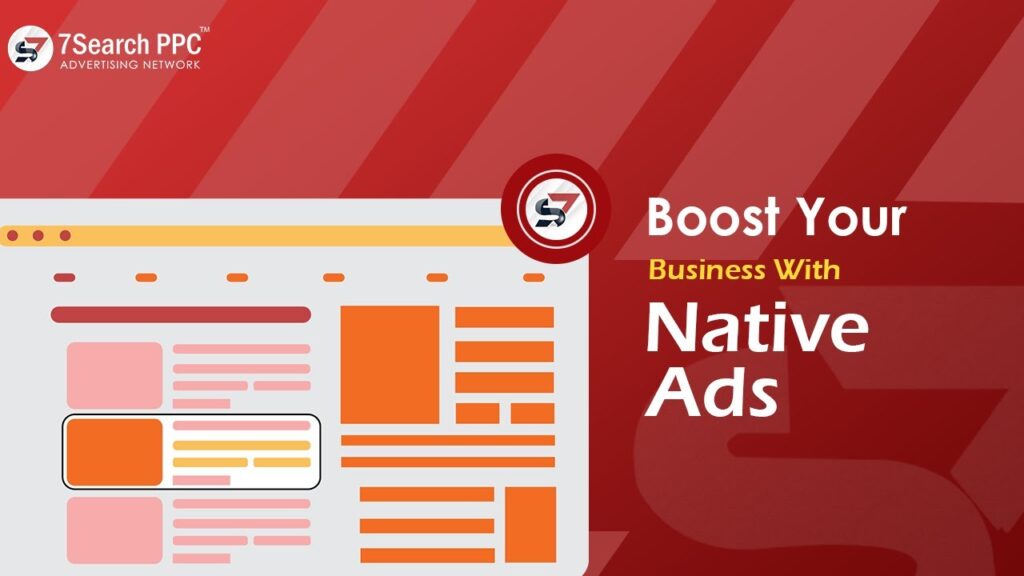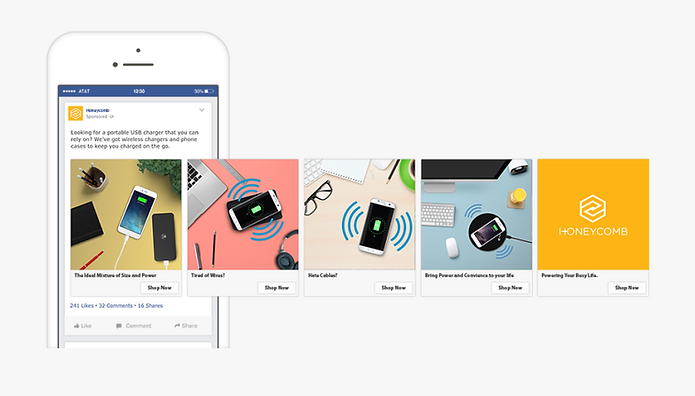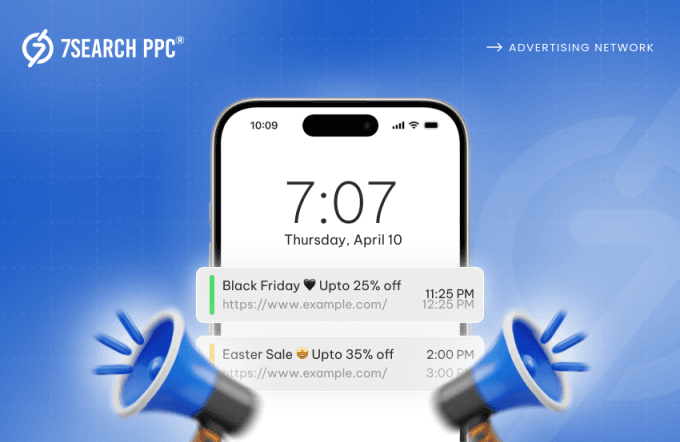Display advertising is one of the most effective techniques to enhance brand awareness and reach a larger audience in the online advertising world. It involves using visually appealing graphics, compelling text, and strategic placement to grab users’ attention and persuade them to take a specific action.
However, as an advertiser, it can be challenging to spread their message throughout the digital landscape. This is where a display ad network comes into play. It connects you with publishers who want to display ads on their sites or pages and helps you to engage a broader audience on your business platform.
Friends, it seems like your curiosity is increasing to know how display advertising networks can help you take your advertising game to the next level. Read the full blog to unlock the strategies for impressing your target audience and maximizing your return on investment. Let’s jump into the pool of knowledge together.
Display Ad Network: Your Secret Weapon For Reaching A Global Audience
If you want to gain a deep understanding of the display ad network, it is essential first to familiarize yourself with display advertising. It refers to putting digital posters on the internet. It means showing eye-catching ads in the form of images and videos on websites or apps to get the audience’s attention.
Businesses use these ads to talk about their offerings and make more people aware of them. It is not a new advertising approach for you because while browsing websites or pages, you encounter various display ads strategically placed to promote products or services.
But have you ever wondered how these ads are shown to you? Through display ad networks. It sets the stage for advertisers where they can easily expand their market by strategically connecting with relevant websites or apps.
How Display Ad Network Works?
It works like a matchmaker for online ads. It links up advertisers who want to showcase their products and services with websites or apps that have space for ads. Advertisers make catchy advertisements, and the network puts them on different websites or apps.
When people visit those sites, they see the ads and click on them if they find them relevant or interesting. This helps advertisers reach more people, and website owners make money by hosting these ads.
Variants Of Display Ads
Display ads come in various formats; each one is specially designed to engage the audience in different ways. Here are some common types of display advertisements:
Banner Ads
Banner ads are those rectangular ads that you mostly see on websites. In these ads, you find a combination of text or visuals, either in the form of static or animated. These ads are specially designed to get the audience’s attention and tell them about something cool to buy or check out.
These ads are like online posters that double people’s interest in a particular product or service, and lots of people use these ads to reach out to potential customers.
There are some common banner standard sizes for online banner ads included:
- Leaderboard (728×90)
- Full Banner (468×60)
- Half Banner (300×60)
- Skyscraper (120×600)
- Medium Rectangle (300×250)
- Large Rectangle (336×280)
(These sizes are common; there might be other choices depending on the platform or ad network you are using.)
Interstitial Ads

Interstitial ads are big, full-screen ads that pop up between pages or during breaks in apps or websites. Unlike regular banner ads, these ads take over the whole screen, making them more attention-grabbing.
They often show up during transitions, like moving between game levels or switching articles in a news app. While they are good at getting attention, too many or poorly timed interstitials can annoy users. It is essential for you to capture attention through these ads without ruining their experience.
Rich Media Display Ads

Rich media display ads are online ads that are more than just pictures. They can have videos, moving images, sound, and fantastic clickable elements that encourage the audience to click on them.
These ads are more interesting than regular ads because they convey the brand message to the intended audience in a dynamic and engaging manner. You can also include elements like form filling and quizzes within the rich media ads to gather the data that you need for campaign optimization.
Native Ads

Native ads are like superheroes for businesses, but how? Let’s find out. They blend into online content seamlessly, looking just like the rest of the content on the website or social media. Instead of standing out with flashy banners, they quietly fit in, making the whole experience smoother for audiences.
These ads are subtle but effective because they look like regular content, so your targeted audience might not even realize they are looking at an ad. It is an effective approach for brands to showcase their advertisements without disturbing their audience’s experience of browsing.
Popunder Ads

Popunder ads are a kind of online ad that quietly opens a new browser window in the background, often without the user realizing it right away. Unlike pop-up ads that show up in front of your active window, popunders stay hidden until you close or minimize your current window.
They are often used to show ads without disrupting the browsing experience in the current window. Some people think they are less annoying than pop-ups, but others still see them as a type of unwanted advertising. So, what do you think about popunder ads?
Carousel Ads

Carousel ads are like online display ads that show a lot of images or videos in one ad. Audiences can swipe through these ads to see different stuff. It helps businesses tell a cool story about their offerings or brand with a bunch of pictures or videos. You often see these ads on social media platforms or websites, and they are meant to be interesting and attention-grabbing.
Video Ads

Video ads are brief commercials you see on the internet— like on websites, social media, or streaming platforms. They are meant to catch your eye and tell you about a product, service, or brand.
These ads use cool clips, music, and sometimes words to share a story or show off important stuff. These ads use video ads to convince their audience to do something like buy something or check out a website. Video ads help businesses connect with their audience in an interesting and engaging way.
What Methods Can Be Used To Assess The Effectiveness Of Display Ads?
Checking how well your ads are doing is vital for advertisers. It helps them see how effective their campaigns are and make them achieve incredible results. Here are several key metrics and methods to display ad performance.
Click-Through Rate
CTR, or click-through rate, is a way for businesses to determine how well their display ads are performing. It is like a percentage that shows the number of people who clicked on an ad compared to the total number who saw it. A higher CTR means more people found the ad interesting and clicked on it.
The formula for calculating CTR is: CTR= (Clicks/Impressions) x 100
Conversion Rate
The conversion rate method allows businesses to see how well their display ads are doing. It helps businesses assess ad performance by measuring the percentage of the audience that saw the ad and took the desired action (Purchase or sign up). If the conversion rate is higher, it means the ads are doing a great job for the business by converting the audience into customers.
The formula for calculating the conversion rate is:
Conversion Rate= (Total Conversions/Total Visitors) x 100
Impressions
Having broad visibility is essential for every business. How can you determine if your display ad network is effectively generating online visibility for your business? By looking at the number of impressions, my friend.
It helps businesses to know how many times people see their running online ads. It shows how visible and widespread the ad is, helping businesses see if it’s good at making people aware of their brand. If the number of impressions is high, it means businesses are getting success in making their brand famous in their particular industry.
Bounce Rate
The bounce rate method gives businesses an idea of how many people come through display advertising on their landing page and leave quickly without attempting any desired action.
If lots of people are leaving quickly, it simply means that display advertisements are not working well for businesses. In that case, they make their ads and websites content better to keep visitors engaged and encourage them to do a particular desired action.
The formula for calculating the bounce rate is:
Bounce Rate= (Total visitors to a webpage who left without any interactions/ Total visitors to a webpage) x 100
Return On Ad Spend (ROAS)
Return on ad spend (ROAS) is an essential method for businesses to measure their advertising efforts. With the help of the ROAS method, businesses can easily understand whether the revenue that they gain from business is more than the ad spend or not.
A higher ROAS is like a thumbs-up for businesses; it shows that they are running on a profitable path. While a lower ROAS is like a red signal for businesses to review their advertising efforts.
The formula for calculating Return on ad spend is:
ROAS= (Revenue from ads/ Ad Spend) x 100
Launch Your Display Ads Like A Pro

It is essential for businesses to understand the step-by-step process of displaying ads to get started. We have researched the following steps for you.
Please take a glance-
Know Your Audience
Businesses create ads to impress their audience and convey a message about their offerings. However, if they lack knowledge about their audience, it makes it challenging to make their ads effective. You must create your targeted audience personas to understand the demographics, interests, and behaviors. It can help you make display ads that align with your targeted audience.
Define Your Advertising Goals
You must figure out what you want from your ads—whether it’s getting your brand famous, generating new leads for business, attracting traffic to your site, or making sales. A clear mindset on the advertising goals can help you to make ads accordingly.
Create Attractive Ads
The next step after defining your advertising goal is to create attractive ads. You must focus on making ads that look great and get noticed. You can use the following points to get people interested.
- Use Relevant Visuals
- Clear and Concise Message
- Strong CTA
Choose The Best Display Ad Network
After crafting compelling display ads, you must find the leading display ad network that can help you deliver your ads to the right audience at a low cost.
Track The Performance
You must keep an eye on how your ads are performing. Here, you can use the A/B testing method to understand the combination of elements that is giving you the best results.
Finding The Perfect Fit: Choosing A Display Ad Network For Your Business
Picking the right display ad network for your business is a pivotal decision that can significantly impact your online advertising success. Here are some fundamental considerations when choosing a display ad network.
Research Top Runners
You must take your time and research top-leading display ad networks that are famous in the industry. You can get help from relevant blogs/articles, search engines, or rival strategies to identify the leading ad networks.
Advertising Budget
You must decide how much money you can spend on advertising. Some ad networks can ask you to spend a high amount, and some ad networks like 7Search PPC offer you pocket-friendly advertising solutions. You must pick one that fits your budget and gives you good results.
Reputation Matters
Check the reputation of the ad network that you plan to collaborate with for the advertisements of your products and services. You can read the reviews from existing advertisers to see if they are trustworthy or not.
Targeting Options
You must check if the ad network lets you target specific groups of people that are relevant to your business. A robust targeting option can make sure your ads reach the right audience.
Ad Formats
After checking the targeting options, you should look at what kinds of ads you can make with each ad network. You must choose one that offers you various ad formats to maximize your campaign’s effectiveness.
Analytical and Monitoring Tools
You must make sure the ad network you choose gives you accurate data and permits you to watch the performance of your ads in real-time. It can help you know the effectiveness of your advertising efforts, and it also helps you make changes to get better results.
Test With A Small Budget
Don’t invest at a high cost in an ad network that is totally new for you. You must test with a small budget and analyze the key metrics, including conversion rates, return on ad spend, and click-through rates. This approach can help you to know the potential of the specific ad network.
Conclusion
The display ad network is like a reliable friend for businesses aiming to boost their online presence and reach a worldwide audience. With different ad styles, targeting choices, and ways to measure success, you can fine-tune their plans and get the desired outcomes. So, make the most of the display ad network to take your ads to the next level, grab your audience’s attention, and succeed in the digital world.
Frequently Asked Questions (FAQs)
What is a display ad network?
Ans. A display ad network is like a matchmaking platform for advertisers and website owners. It helps advertisers showcase their offerings through display advertising on different websites and pages, which leads to high sales and conversions.
What are the perks of using display advertising for promotion?
Ans. The perks of using a display advertising network for promotion are as follows-
- Increase Brand Awareness
- Drive Website Traffic
- Boost Sales
How can I pick the best display ad network?
Ans. You can pick the best display ad network by considering the following points-
- Audience Targeting
- Advertising Cost
- Ad Formats
- Monitoring and Tracking Tools
What are some common pitfalls to avoid in display advertising?
Ans. There are the following common pitfalls to avoid in display advertising-
- Targeting The Wrong Audience
- Neglecting Ad Creative Quality
- Setting Unrealistic Goals
- Failing To Track Campaign Regularly



















